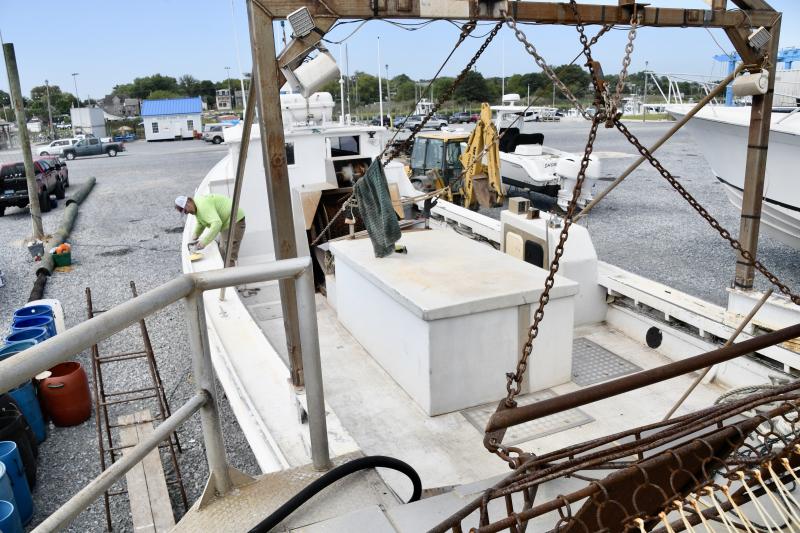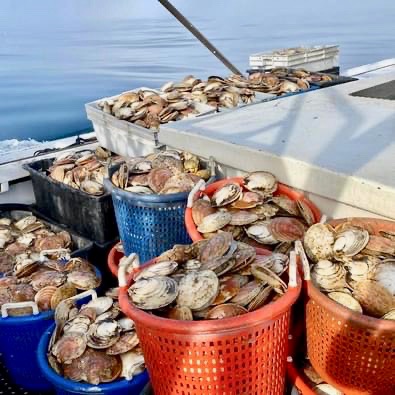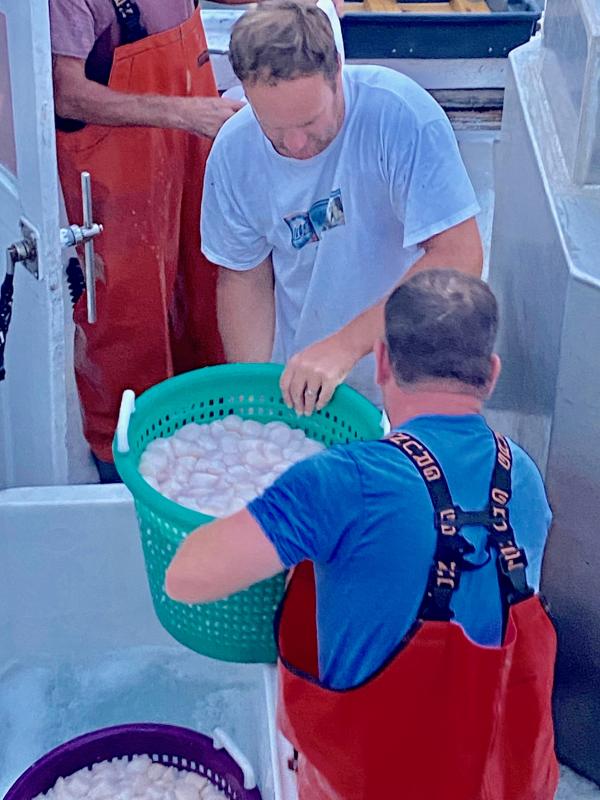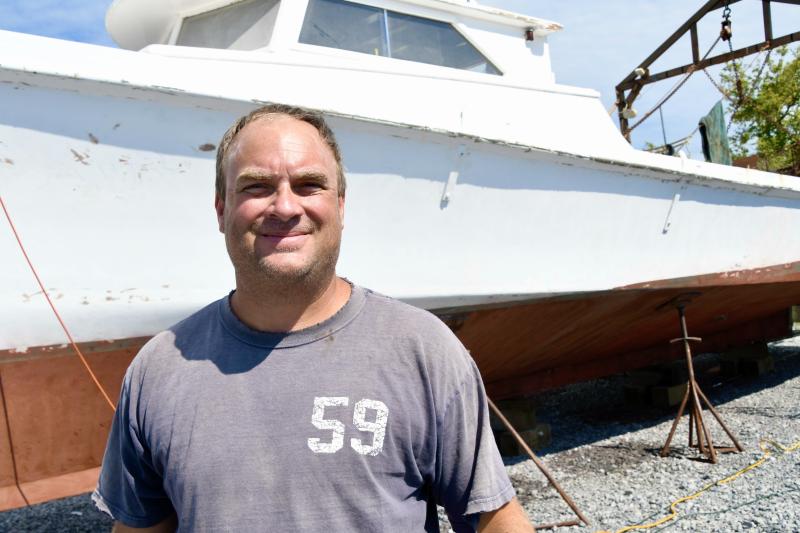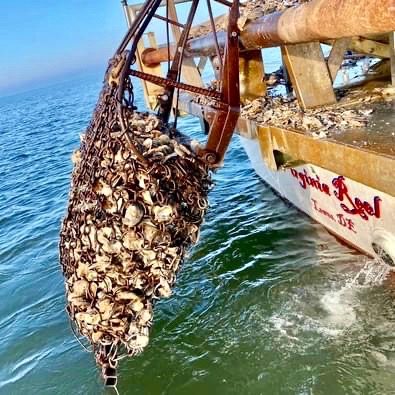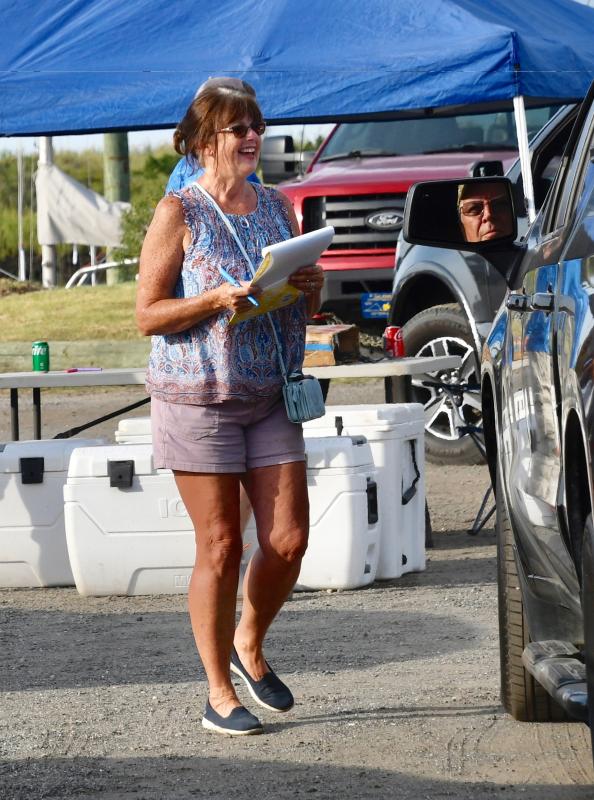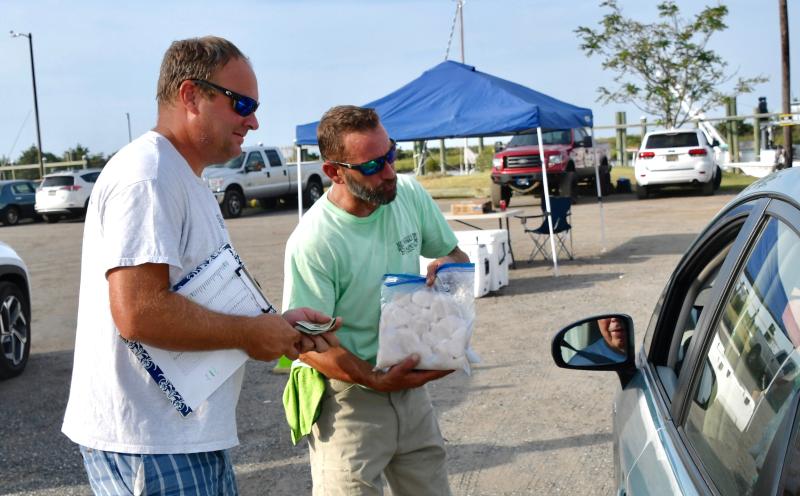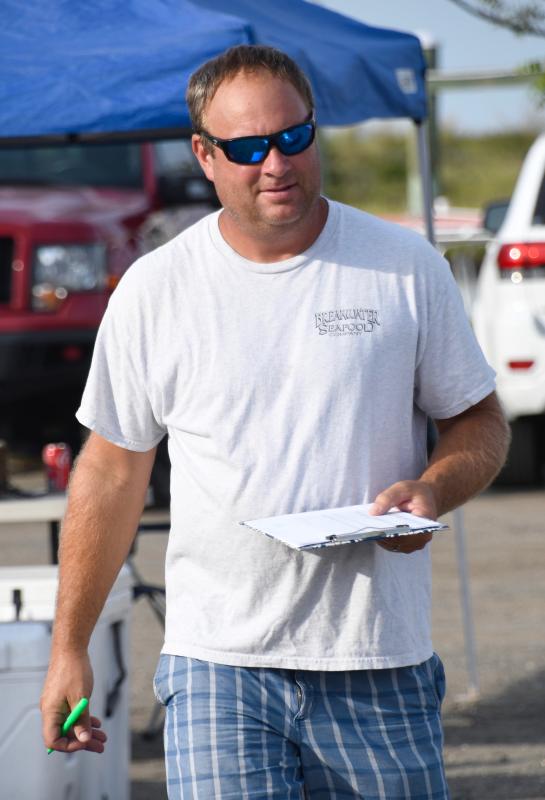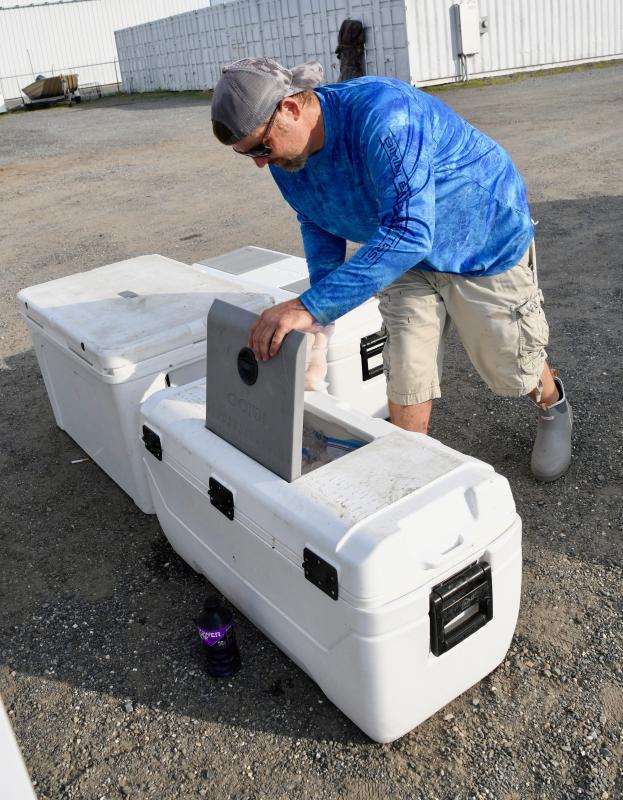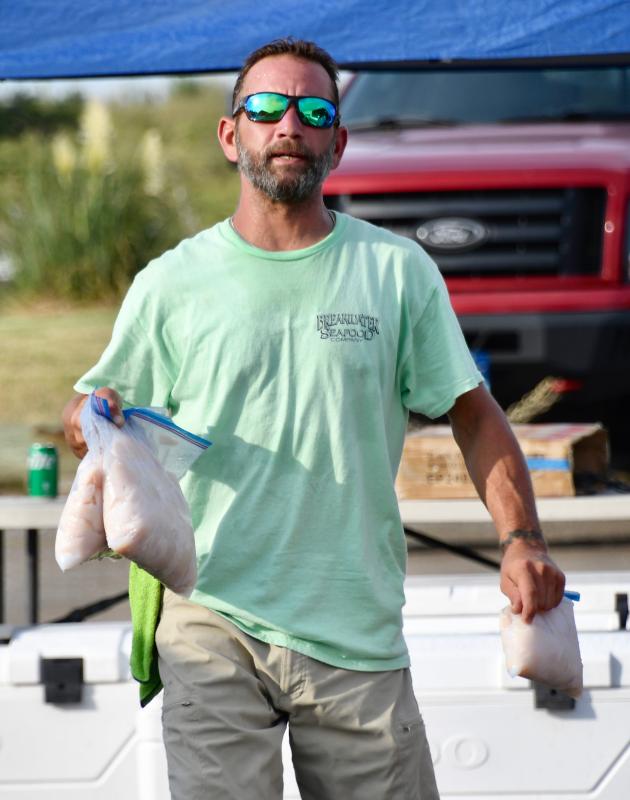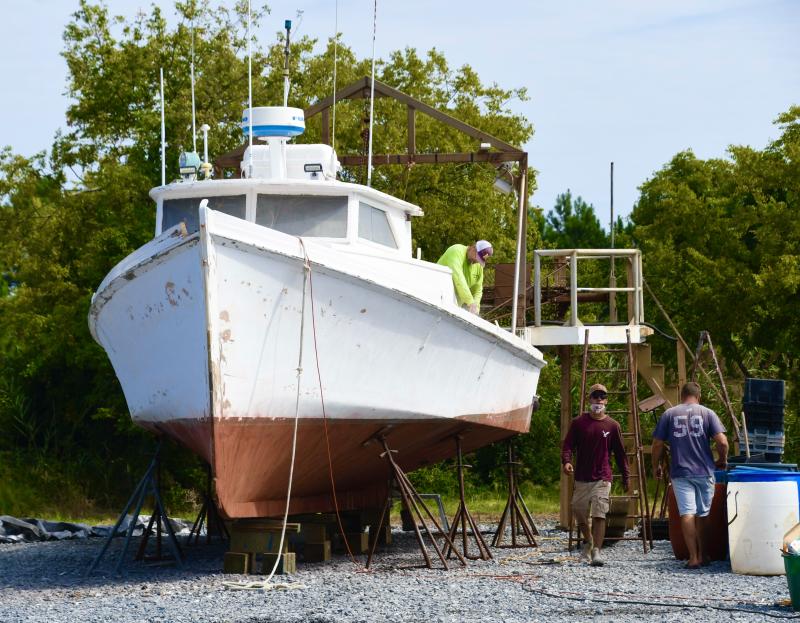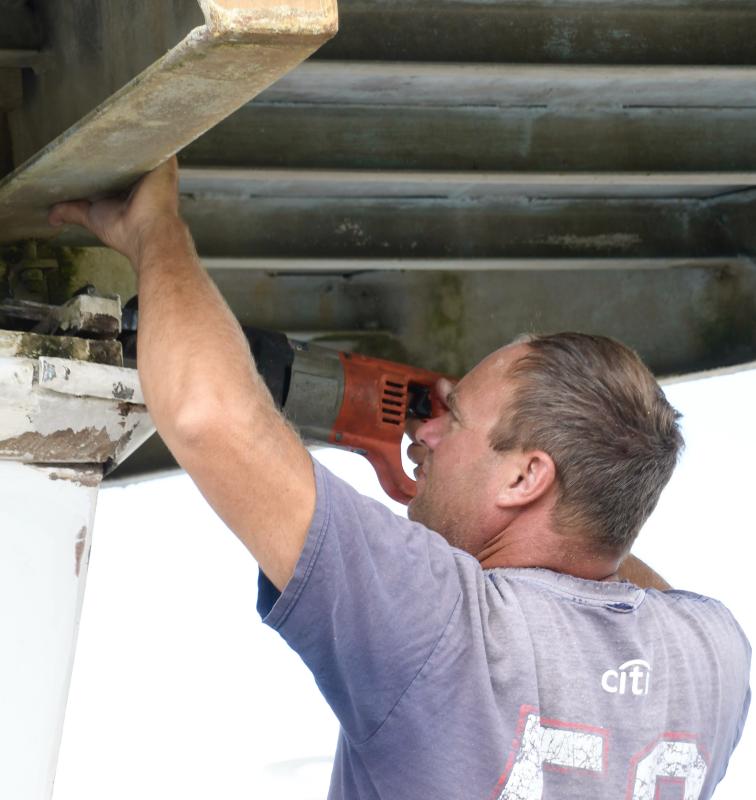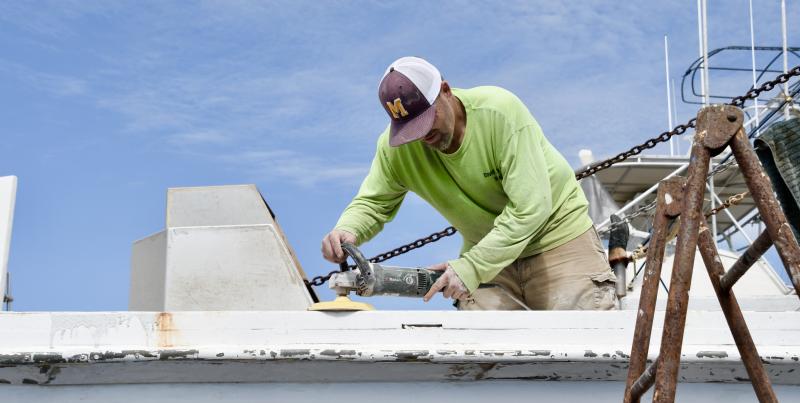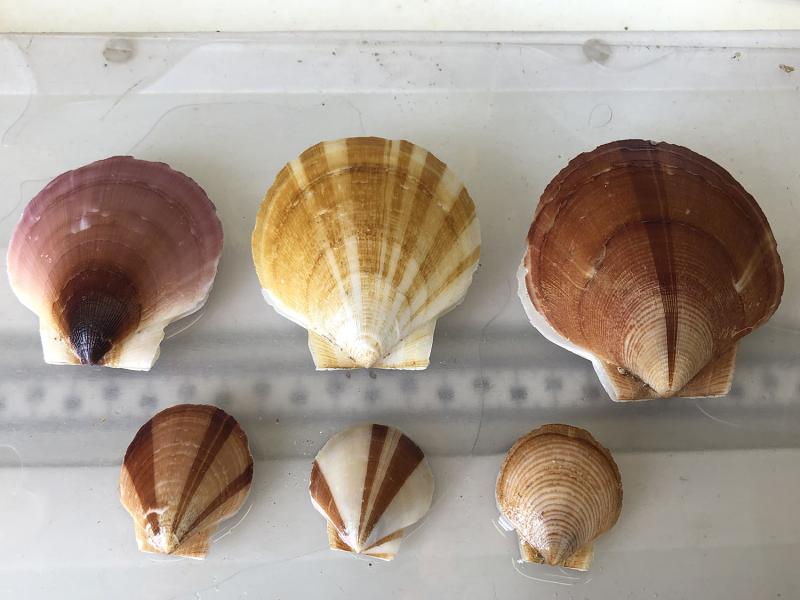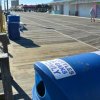Selling scallops has become a family affair
Former teacher Tim Sage is one of the few watermen in the Cape Region. That's in stark contrast to a time when fishing was a way of life for many Lewes-area men.
On his 46-foot boat Virginia Reel, Sage and his small crew dredge for scallops in the summer, conchs from March to June, oysters from September to December and blue crabs from December through February.
Under his Breakwater Seafood Co., he and his wife, Theresa, sell scallops when in season at Riverside Marina at the end of Pilottown Road. It's actually a family affair that had very humble beginnings.
They have many loyal patrons who rave about their fresh scallops. Customers use social media to preorder 2- or 5-pound bags, and vehicles form long lines on sale days as they pick up their catch. It’s an efficient operation with people staying in their vehicles.
Sometimes Sage makes two trips a day to harvest and sell 700 to 800 pounds of scallops.
Local restaurants have featured their scallops, and they have been used in cooking demonstrations at the Historic Lewes Farmers Market.
In August, he met his scallops quota under his federal scallop permit. He's was still able to sell them in September thanks to another skipper's supply. Sales for this summer have ended as the crew prepares for oyster season.
Family operation
At first, scallops were sold to wholesalers and available to family and friends. Tim, Theresa and Tim's father, Fred, would weigh and bag the scallops in Fred's garage.
Theresa said she tried to get her husband to advertise sales on social media, but he always refused.
However, people started asking who the mysterious Scallops Guy was. It's then that Theresa’s daughters Molly, Shannon and Sara dragged Tim into the world of social media. Molly and Shannon planned the first pop-up sale at the Lewes Ice House, and Sara developed a Facebook page.
Theresa researched what other companies were selling scallops for and Tim set the price lower than anyone else.
The first sale was set for 10 a.m., June 20, 2020. It didn't take long for a traffic jam to form along New Road, and their scallops were sold out before the sale was actually scheduled to start.
To meet the demand, Tim and his crew went out immediately to get more scallops for the first sale. By noon, they had sold 1,200 pounds.
It became apparent they needed a larger area for their pop-up sales, so they moved to Riverside Marina.
Theresa, a retired teacher, has become an accomplished furniture refinisher and painter. She met Tim while they were teaching at Sussex Academy; they married in 2019 on Lewes Beach.
Theresa posted the following on their Facebook page:
“We have learned so much over the past four years, and these scallop sales have become about so much more than seafood. They are about this wonderful seaside community, about new friends that we are happy to see at each sale, about supporting a small local business, about trying to constantly do better, be kind, and remain true to our goal of selling a fresh product at a fair price.
“For us, it has become so much more. It’s provided an opportunity for our two families to blend into one. It’s all hands on deck for bagging and selling, and celebrating. We all look forward to each summer because it brings so many chances for us to get together and have fun, to show support for Tim, and to be a part of the magic that has become a Breakwater Seafood scallop sale.”
Only permit in Delaware
Sage bought the boat and permits from his uncle Rusty Trout, who owned the Lewes Ice Plant, in 2008 after fishing with him for five years. He also works at the Pilots’ Association for the Bay and River Delaware station.
Sage said he is the only person with a scallops permit in Delaware, although there are several scallop boats that call Cape May, N.J., their home port.
The crew drops a metal dredge or rack to the ocean bottom and drags it for about 20 minutes. The dredge is winched back onto the boat where the scallops’ shells are removed and discarded back into the water. What we eat is called the adductor muscle.
It's similar to the process used to fish for oysters, clams and crabs.
Scallop season is a busy one. When scallops beds were open closer to Lewes, Sage and his crew would be out 12 to 15 hours and do back-to-back trips. After a long morning, they would return to port at 1 to 2 p.m., fuel the boat and leave again by 5 p.m., and return the next morning.
Scallop fishing in Delaware Bay and in the Atlantic Ocean at Elephant Trunk about 50 miles off the Delaware coast has been shut down to allow the scallops to recover and grow. “It's always a rotation and should open up again in three years,” Sage said.
However, it adds to his overhead costs when he has to go to northern New Jersey and even off Long Island, N.Y., to get scallops. It takes him 24 to 30 hours to make a round trip.
Making a living off the water is not easy. “You have to be able to adapt and you have to be diverse,” Sage said.
Scallops are valuable
Scallops are found in the Atlantic Ocean waters from the Mid-Atlantic to the Canadian border, with the largest fleets in Maine. In 2021, 43 million pounds of scallops were harvested in the Atlantic waters, which were valued at $670 million. It's one of the most valuable fisheries in the nation.
That's a drop from 60 million pounds in 2019. The harvest was projected to be 34 million pounds in 2022.
Not all scallops are pulled from the sea. A handful of scallop farms exist in New England.
Conchs, oysters and crabs
Conchs are taken to a processing plant in New Jersey. Sage said while most are exported to Asian countries, there is a good domestic market as well.
The conch, which is also called a whelk in this area, is a cousin of the more colorful and sought-after queen and pink-lipped conch found in the warm waters of Florida and the Caribbean.
Sage docks his boat in Bowers Beach during oyster season, because the area where he fishes near the mouth of the Leipsic River is only nine miles away. He can get up to 150 bushels a day. Trucks from shucking houses make daily pickups, including Harris Seafood in Kent Narrows, Md., which is a large distributor.
Sage said his boat, which is small for a dredger, was made for the relatively calm waters of the Chesapeake Bay. “In winter, it can get really rough,” he said, adding he is constantly monitoring weather reports.
Sea scallop survey
Since 2008, the University of Delaware research vessel Hugh R. Sharp, docked in Lewes, has been contracted by NOAA Fisheries to conduct a Northeast Atlantic sea scallop survey each summer. The shop and scientific crew deploy a dredge to collect sea scallops and tow the HabCam. This instrument continuously photographs the ocean bottom habitat capturing images of sea scallops and other sea life.
However, this past summer, the June 14-21 survey was canceled due to mechanical problems aboard the Hugh R. Sharp.
Data collected on sea scallop surveys are used to understand the distribution and abundance of this species. These data are key in developing quotas and area openings under the sea scallop fishery management plan.
NOAA Fisheries worked with other groups conducting surveys in the region to collect data this year.
